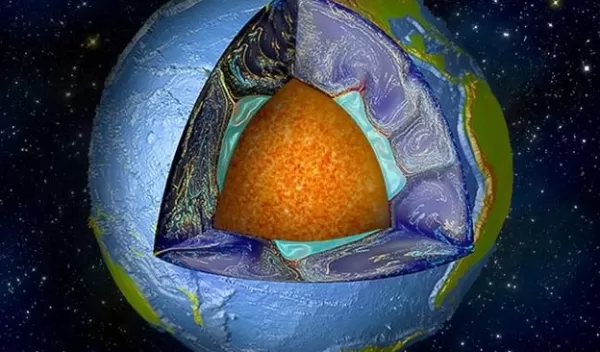
Shocked meteorites provide clues to Earth's lower mantle
Deep below Earth's surface lies a thick rocky layer called the mantle, which makes up the majority of our planet's volume. While Earth's mantle is too deep for humans to observe directly, certain meteorites can provide clues about this unreachable layer.
In an NSF-funded study published in Science Advances, a team of scientists, including Sang-Heon Dan Shim and Thomas Sharp of Arizona State University, has completed a complex analysis of a "shocked meteorite" (one that has experienced high-pressure and high-temperature conditions during an impact event) and gained new insight into Earth's lower mantle.
Shocked meteorites have provided many clues to deep mantle minerals since 1969, when the high-pressure mineral Ringwoodite was discovered.
For the recent study, lead author Luca Bindi of the University of Florence (Italy), Shim and Sharp of ASU's School of Earth and Space Exploration and Xiande Xie of the Guangzhou Institute of Geochemistry (China), focused their efforts on a sample of a shocked meteorite called Suizhou.
"Suizhou was an ideal meteorite to analyze," says Shim, who specializes in using high-pressure experiments to study Earth's mantle. "It provided samples of natural high-pressure minerals like those believed to make up Earth's deep mantle."
The Suizhou meteorite fell in 1986 in the Hubei province in China. Immediately afterward, scientists found and collected samples. The meteorite did not suffer any chemical weathering, and there was no alteration of its iron content.
The implications of this study may ultimately increase our understanding of how Earth itself was oxidized, the researchers say.
"This discovery is a possible explanation for the more oxidizing conditions of the Earth's upper mantle," says Shim, "and supports the idea that deep interior processes may have contributed to the great oxygenation event that took place on the surface."
